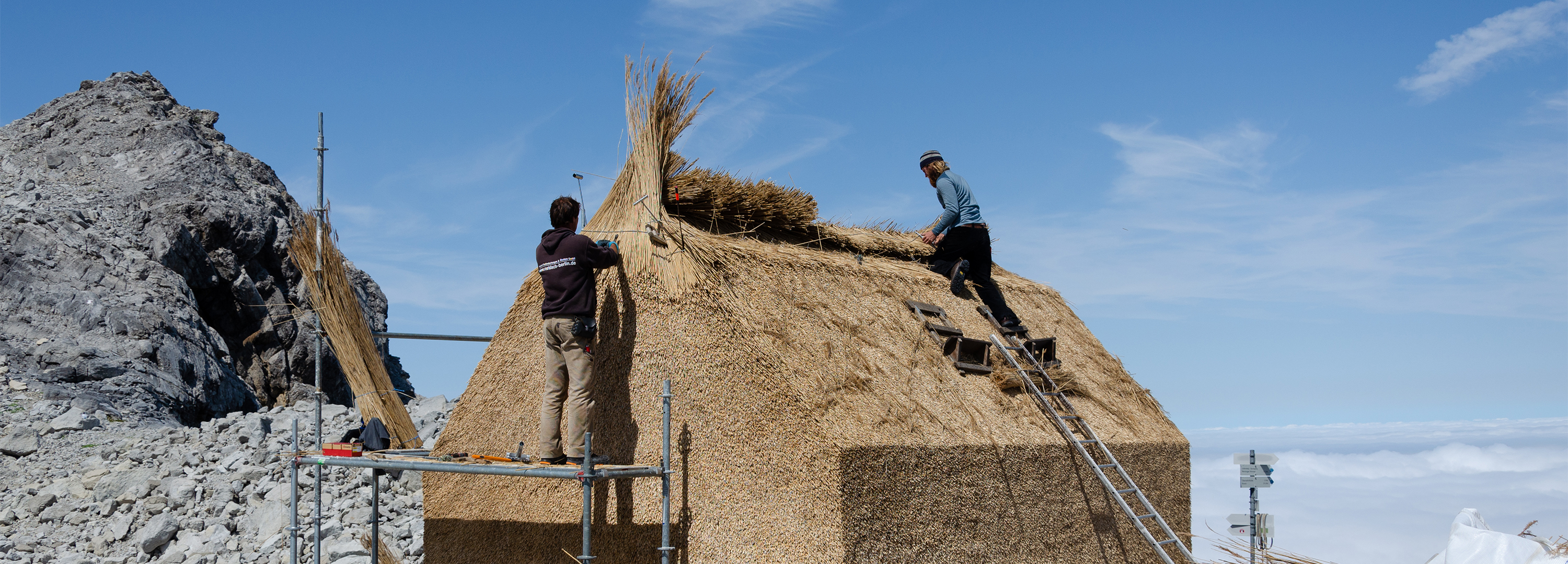Reed in the snow − a research project at icy altitudes

Reed, also known as thatch, comprises various types of hollow, grass-like plants that grow in swampy terrain. It is used in traditional roofing. In Asia and Africa, its use as a building material is widespread, as it is on the coasts of the North and Baltic seas. Reed offers many advantages: it is renewable, non-toxic and carbon-neutral. It grows quickly, forms valuable habitats and ensures good water quality. Every year, the dead part of this plant, which can grow up to 4 m tall, is harvested and used untreated as a covering for façades and roofs. At the end of its life, reed is biodegradable and closes the materials cycle.
Reed for the Mannheimer Hut
In a seminar hosted by the Institute for Building Materials, Building Physics, Building Systems and Design (IBBTE), students from the university set out to explore whether reed could be an appropriate building material in high alpine regions. IBBTE had carried out previous work for the German Alpine Club, which is vocally promoting carbon-neutral structures for its huts. At a little pumphouse for the Mannheimer Hut, the thatching material, which is atypical for the area, is now being tested. The hut stands at 2,679 m of altitude in the Austrian Rätikon, where the alpine climate delivers cold, wind and ice. In the early planning phase, IBBTE had called on an experienced thatcher to help develop simple, materially suitable details. The design should be straightforward; the location and use should be appropriate; the material should take centre stage.
Positive Balance
The subconstruction of the little pumphouse consists of native softwoods with traditional wood connections that require hardly any metal. These were prefabricated and flown in by helicopter. The reed shell, which is 40 cm thick, was created by the students and artisan together, as was the gabled façade of native larchwood. On this side of the hut, a seating step invites hikers to take a break − and enjoy a lovely view of the valley.
The small-scale research project has its first winter behind it. Among other data, the aging process, humidity, wind resistance and wear rate were compiled at monitoring and photo stations. So far, reed as a building material demonstrates a positive balance: the hut has withstood extreme weather conditions.
Eine ausführliche Print-Dokumentation finden Sie in unserer Ausgabe DETAIL 6/2021 mit dem Themenschwerpunkt “xxxx“.

